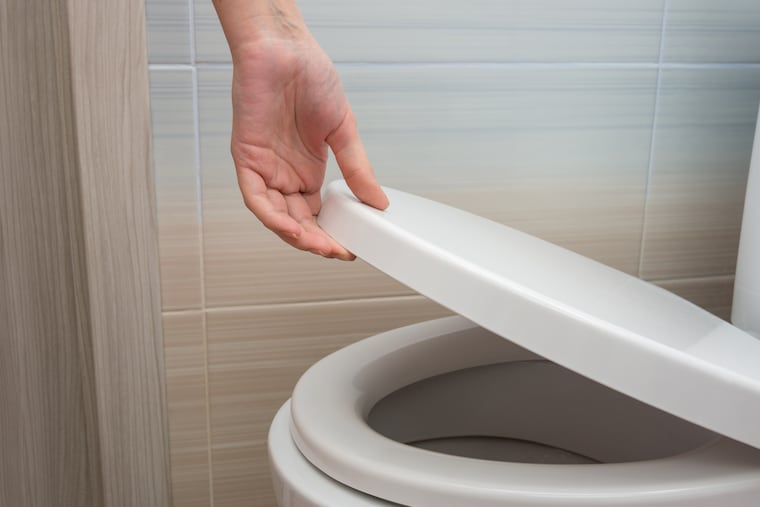Put the seat down: The new toilet etiquette for when you have guests over during COVID-19 l Expert Opinion
Lessons learned from the COVID-19 pandemic may finally settle a debate that has roiled households since the invention of the flush commode.

In the late 1800s, Thomas Crapper revolutionized toilet flushing. His ballcock valve and tank filling mechanism modernized plumbing.
It also spearheaded more than a century of bickering on toilet seat etiquette. The essential question: Who should put the seat down?
In our home, putting the seat down is considered common courtesy. Much to my chagrin, this practice does not always transcend to the public arena. In gender neutral/gender all-inclusive bathrooms, the toilet seat dispute persists. Anyone who chooses to sit down must remain on high alert to avoid splashing down into an open bowl.
Lessons learned from the COVID-19 pandemic may finally settle the toilet seat debate. As we all should know, public health experts have urged us to wear masks because the virus spreads through respiratory droplets. Now, there are cautionary warnings stating that the virus can be spread through other bodily fluids, including an infected person’s stool. Joshua Septimus, associate professor of clinical medicine and medical director of Houston Methodist Primary Care Group, notes that the virus can be found in a patient’s stool throughout the course of the illness and even after a person has recovered from COVID-19.
Here lies an opportunity to combine etiquette with public health practice. When a toilet is flushed with the lid open, it disperses aerosol droplets called a toilet plume. These particles mix in the air in the room and can land and contaminate surfaces. Research suggests that toilet plume could play a contributory role in the transmission of infectious diseases, such as coronavirus.
The way to prevent the spread is to close the toilet lid before you flush. This applies to all of us. Public toilets without lids are another issue. If you do need to use a public restroom, it is recommended to wear a mask the entire time, as it provides a needed layer of protection from anything in the air.
When the lid is down, we are all doing our part. It is an all-gender effort. Plus, the dog won’t be slurping, the cell phone won’t fall in, and neither will any people.
But closing the lid is only one step in preventing the spread of illness. Additional bathroom practices will reduce the spread of viruses and infections.
Many of us are engaging in outdoor, socially distant (six feet apart) gatherings. But nature will call for guests who may want to use your facilities, and it is important to be prepared. Here are a few suggestions for healthy hosting.
Do not invite guests over if anyone in your household is experiencing symptoms or has been exposed to COVID-19.
Before opening your home, ask your guests whether they are experiencing any signs and symptoms of the virus, such as a fever, cough or loss of taste and smell. Ask them whether they have been exposed to someone who tested positive. If the answer is yes, reschedule for a later date. You are not being rude. You are being cautious and safe.
If your home has more than one bathroom, designate one for guests only. When entering your home to use the bathroom, your visitors should touch as few surfaces on the way as possible.
Guests should wear masks when they are inside your home. And should sanitize their hands before touching the door handle, so provide sanitizer or wipes. This is for the sake of everyone’s health.
Prepare your bathroom by providing disinfectant cleaner or wipes. Provide paper towels for hand drying. Remove such personal objects as toothbrushes and cloth towels.
Guests should wipe down such surfaces as toilet handles and spigots before and after use.
The lid should be closed before flushing. Next, wipe down the handle and follow with hand-washing.
Hands should be washed using soap and water for a full 20 seconds, then dried with a paper towel.
If you are a bathroom cell phone user, your phone also needs disinfecting. In other words, wipe it before you swipe it.
It has been said that kindness begins in the home. In the era of COVID-19, public health begins in the home, too. Enjoy your social distancing and be safe.
Sherri Becker RN, DNP, is an Adjunct Professor of Nursing at Gwynedd Mercy University.